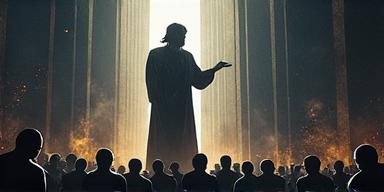WingsofaDove
Beloved of All
Prodigal Son
The Parable of the Prodigal Son is one of the most well-known stories from the Bible, found in Luke 15:11-32. It tells the story of a father and his two sons. The younger son asks for his inheritance early, leaves home, and squanders his wealth in reckless living. When he finds himself in dire straits, he decides to return home, expecting to be treated as a servant. Instead, his father welcomes him back with open arms, celebrating his return. The older son, who stayed and worked diligently, feels slighted by the celebration for his wayward brother. The parable highlights themes of forgiveness, repentance, and unconditional love.
In Christian teachings, the Prodigal Son is often seen as a metaphor for God's forgiveness and the joy of repentance. The father's love and acceptance symbolize God's grace, while the return of the son represents the repentant sinner's return to God. The older son's reaction can also be seen as a reflection of human self-righteousness and the challenge of accepting God's grace for others.
This story is frequently used in sermons and religious discussions to illustrate the boundless nature of divine love and the importance of forgiveness. It encourages believers to embrace repentance and to extend grace to others, just as the father did for his son.
The Parable of the Prodigal Son is one of the most well-known stories from the Bible, found in Luke 15:11-32. It tells the story of a father and his two sons. The younger son asks for his inheritance early, leaves home, and squanders his wealth in reckless living. When he finds himself in dire straits, he decides to return home, expecting to be treated as a servant. Instead, his father welcomes him back with open arms, celebrating his return. The older son, who stayed and worked diligently, feels slighted by the celebration for his wayward brother. The parable highlights themes of forgiveness, repentance, and unconditional love.
In Christian teachings, the Prodigal Son is often seen as a metaphor for God's forgiveness and the joy of repentance. The father's love and acceptance symbolize God's grace, while the return of the son represents the repentant sinner's return to God. The older son's reaction can also be seen as a reflection of human self-righteousness and the challenge of accepting God's grace for others.
This story is frequently used in sermons and religious discussions to illustrate the boundless nature of divine love and the importance of forgiveness. It encourages believers to embrace repentance and to extend grace to others, just as the father did for his son.



